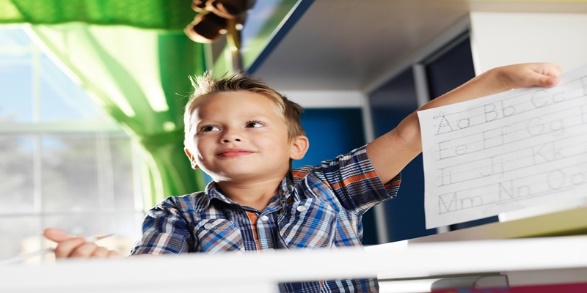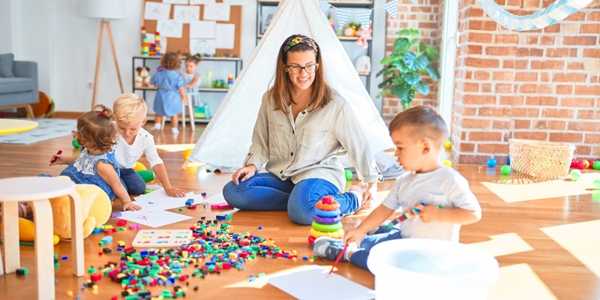Mother & baby
Navigating the Bilingual Toddler Journey: Proven Methods and Strategies
Embarking on raising a bilingual toddler can be exciting and challenging. As a parent, you give your child a special gift to influence their future.
Embarking on raising a bilingual toddler can be exciting and challenging. As a parent, you give your child a special gift to influence their future. But your child will also reap other rewards for life from bilingualism, such as enhanced cognitive abilities, cultural connections, and new opportunities.
You might also wonder how to introduce two languages and how to overcome any hurdles your family might face. What you do now will set patterns and foundations for your child’s lifelong language skills and cultural knowledge. Look at practical ways to nurture bilingualism during your toddler’s critical first years.
The Advantages of Raising a Bilingual Toddler

Cognitive Advantages
Raising a bilingual toddler offers a host of cognitive benefits. According to research, children exposed to two languages at an early age have an improved executive function. These functions include attention, task-switching, and problem-solving capabilities. Therefore, bilingual toddlers perform better in tasks requiring rapid shifts in mental focus and situations requiring creative problem-solving.
Cultural Awareness and Empathy
Bilingualism opens doors to diverse cultures and points of view. Toddlers who grow up speaking two languages naturally develop a deeper appreciation for different ways of life. This early exposure encourages empathy and cultural sensitivity and allows them to thrive in our increasingly interconnected world. They’ll grow up more accepting and respectful of people and their traditions and customs.
Future Career Opportunities
In today’s globalized economy, multilingualism is a great advantage. Bilinguals often have a competitive edge in the job market and can choose a wider career choice. When you start early, you are giving your little one a much-needed skill to succeed in their professional life. Multinational companies value multilingual employees, and this could become a key differentiator for your child in securing sustainable long-term career growth.
Proven Methods to Developing Bilingual Skills in Toddlers

Consistent Language Exposure
Give your little child both languages daily to create an immersion environment. Reading books or singing songs and engaging in games related to those books is an overall concept of a language-rich environment. How consistent you are with regular exposure to both languages plays a key role here.
One Parent, One Language Approach
Consider adopting the “one parent, one language” approach: each parent speaks with the child in their native language. In this way, toddlers can associate each language with a person. This is another way they can learn to differentiate languages more easily and switch between them.
Use Technology Wisely
Utilize apps, videos, and interactive programs designed for bilingual toddlers. Of course, it is crucial to limit screen time severely, but some well-chosen digital tools can support your efforts and expand the toddler’s exposure to the language. Seek content that grabs your toddler’s attention while reinforcing new vocabulary and expressive language in both languages.
Foster Social Contact
Organize playdates or join a community group where your toddler can interact with other children who speak the target languages. Social contact provides natural contexts for language use, and the experiences may raise motivation and confidence in using both languages.
Navigating the Challenges of Bilingual Toddlerhood

Raising a bilingual toddler presents its own set of challenges. Understanding these challenges will guide you through these hurdles and ensure that your little one’s learning of their languages is smooth and easy.
Consistency and Persistence
The most significant difficulty is being consistent in the use of language. When tired or frustrated, switching to another language is tempting, but it is really important to stick with the strategy you’ve chosen for your child’s linguistic benefit. Persistence will eventually pay off, even when progress appears to be extremely slow.
Mixed Languages
Toddlers often mix languages and could develop unique “hybrid” sentences in their language development. While this may concern you, the good news is that this is only a normal part of becoming bilingual. Known as code-switching, this is the way your brain tries to cope with two sets of linguistic knowledge.
Dealing with Outside Influences
Your well-meaning family members or strangers may resist your bilingual efforts, believing multiple languages will confuse your child. Be prepared and stand firm in your decision, armed with knowledge of the benefits of bilingualism. Educate others when possible, but don’t let their opinions derail your efforts.
Balancing Language Exposure
Providing equal exposure to both languages can be challenging, as one usually dominates your surroundings. Be creative in finding opportunities for exposure to the minority language via books, music, playdates, or trips to areas where the language is spoken.
Immersing Your Toddler in Both Languages
Create a Language-Rich Environment
Expose your toddler to both languages in everyday life. Fill your home with books, music, and videos in both languages. Label household items in both languages to reinforce vocabulary. This constant exposure helps your child naturally absorb both languages.
Designate Language Zones
Give each language a specific area or time; for example, one would be in the kitchen and the other in the living room, or one at mealtime and another at playtime. That way, your toddler gets used to associating each language with a particular context, which helps ease their language switches.
Engage in interactive activities like singing songs, playing games, and telling stories in each language. These activities will make the process of learning the language more enjoyable and help him remember more. Building your child’s bilingual capabilities will take time and effort, so just be patient and maintain consistency.
Tips for Parents on Maintaining a Bilingual Home
Create a Language-Rich Environment
Let exposure to both languages be rooted in real-life situations throughout the day. Ensure that books, music, and toys in both languages are within easy reach. Watch appropriate television shows and videos in the target language. Such exposure will normalize the situation of bilingualism.
• OPOL: Each parent speaks to the child in their native language.
• ML@H: A minority language is spoken at home, and the child picks up the majority language outside.
• Time and Place: Establish specific times or locations where a particular language must be spoken.
Whatever approach you favor, consistency is the golden rule to prevent confusion and promote the acquisition of the intended language.
Get Involved with Interactive Language Games
Understand that bilingualism can be a lot of fun for your child. You can play with words, sing songs, and narrate stories in both languages. Encourage your toddler to talk as an active participant in conversations. Not only does this strategy advance language skills, but it also strengthens your child’s bond with you.
Be Patient and Persistent
Remember that bilingual development takes time. Your toddler might occasionally have mixed languages or some indication of preference towards one language. These are very normal and temporary. Keep doing what you’re doing, and praise small successes. Your persistence will eventually pay off, and your kid will be granted the wonderful gift of being bilingual once they grow up.
Embarking on a Lifelong Bilingual Adventure
Remember that this bilingual journey requires consistency and patience when engaging your toddler in this journey. Your effort to expose your child to multiple languages will pay off later in his life. Welcome challenges because opportunities lie within, yet, of course, celebrate all the little achievements. Be honest about your bilingual intentions, seek support anytime needed, and your little one will begin to blossom into a proud multilingual orator.
How do you like this article?





 Latest Posts
Latest Posts





